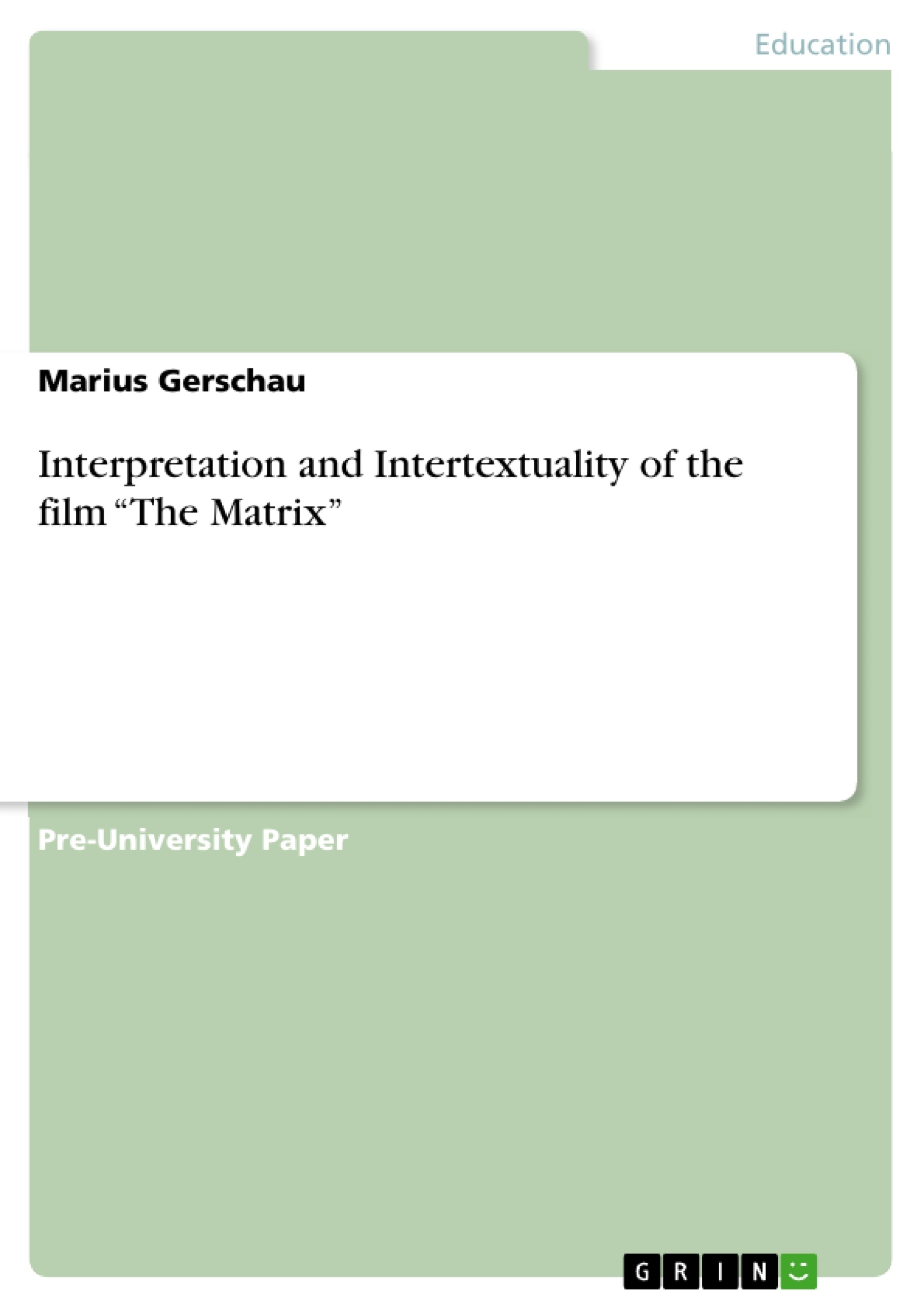Take a trip down memory lane and find yourself in the year 1999. This year marked the birth of a film that would eventually become one of the most praised science fiction films of all time. Not only being received positively by critics and having a worldwide gross profit of over 463 million dollars with a budget of 63 million dollars, The Matrix by the Wachowski Brothers quickly gained a cult following for it’s highly professional fighting scenes, revolutionary special effects and steampunk atmosphere. It spawned two even more successful and anticipated sequels four years later, three video games, comic books and an anime spin-off. But what really made The Matrix a mentionable film was not it’s focus on action scenes, but it’s complex storyline and a wide range of possible Interpretation and Intertextuality. This seminar paper will give you a glimpse of how far those two points can reach. It will summarize the plot of The Matrix first, then it will interpret the points in the movie, that seem unclear and confusing to the viewer and last but not least explain the most notable references and the Intertextuality to works, that inspired the movie. It will, however, only treat the first and original movie The Matrix and not it’s sequels Matrix Reloaded and Matrix Revolutions and other media from the franchise.
Inhaltsverzeichnis (Table of Contents)
- Introduction
- The Plot
- Explanation
- Extended Definition of the Matrix
- Bending the Matrix
- The Oracle
- Neo as “the One”
- Intertextuality
- Biblical Approaches
- Plato's “Allegory of the Cave”
- Other Mentionable References
- Conclusion
- Works Cited
Zielsetzung und Themenschwerpunkte (Objectives and Key Themes)
This seminar paper explores the complex storyline and intertextual references within the film "The Matrix." The paper first summarizes the plot, then delves into the interpretation of unclear or confusing aspects of the movie, and finally examines the significant references and intertextuality to works that inspired the film. The paper focuses solely on the first and original "The Matrix" film, excluding its sequels and other media from the franchise. The paper examines several key themes: * **The Nature of Reality:** The film explores the possibility of living in a simulated reality, questioning what is real and what is illusion. * **The Concept of Free Will:** The film examines the idea of choice and agency within a predetermined system. * **The Power of Belief:** The film explores the influence of belief and its role in shaping reality. * **The Role of Prophecy and Fate:** The film presents a complex narrative surrounding a prophesied savior and the concept of destiny. * **The Struggle for Liberation:** The film highlights the themes of rebellion and resistance against oppressive systems.Zusammenfassung der Kapitel (Chapter Summaries)
The introduction sets the stage by outlining the film's impact and popularity, emphasizing the movie's complex storyline and intertextuality. The plot summary follows Thomas Anderson, a computer programmer living a double life as the hacker Neo. He seeks answers about the "Matrix" and encounters Morpheus, a mysterious figure who offers him a choice between two pills: one that will keep him in the simulated reality, and one that will reveal the truth. Neo chooses the red pill and experiences a profound shift in reality, waking up in the real world, which is a post-apocalyptic wasteland ruled by machines. He learns that the Matrix is a computer simulation designed to enslave humanity and that he is destined to be "The One" who can liberate humanity. The explanation section delves into the meaning of the Matrix, its control over human perception, and the concept of bending the Matrix through mental control. It explores the role of The Oracle, a powerful figure who guides Neo and predicts his future. The section also examines Neo's role as "The One" and his potential to change the fate of humanity. The intertextuality section explores the film's connections to various works, including biblical narratives, Plato's "Allegory of the Cave", and other references.Schlüsselwörter (Keywords)
This seminar paper focuses on the film "The Matrix", exploring its themes of reality, free will, belief, prophecy, and liberation. It examines the film's intertextuality and explores the film's connections to biblical narratives, Plato's philosophy, and other cultural references. The paper examines the roles of key characters like Neo, Morpheus, and The Oracle, and their influence on the narrative.- Quote paper
- Marius Gerschau (Author), 2012, Interpretation and Intertextuality of the film “The Matrix”, Munich, GRIN Verlag, https://www.grin.com/document/213057



